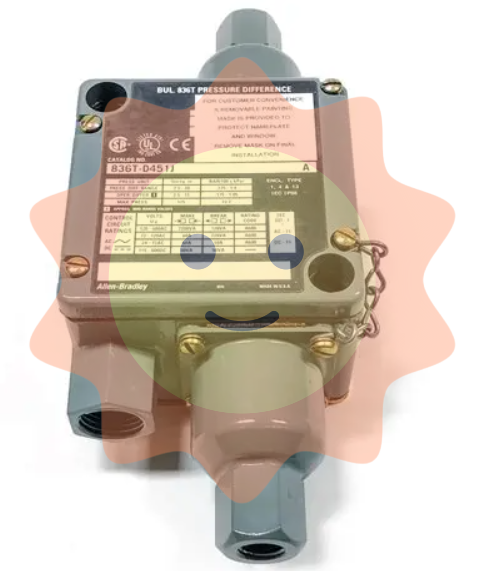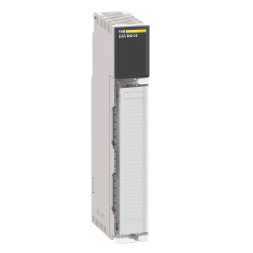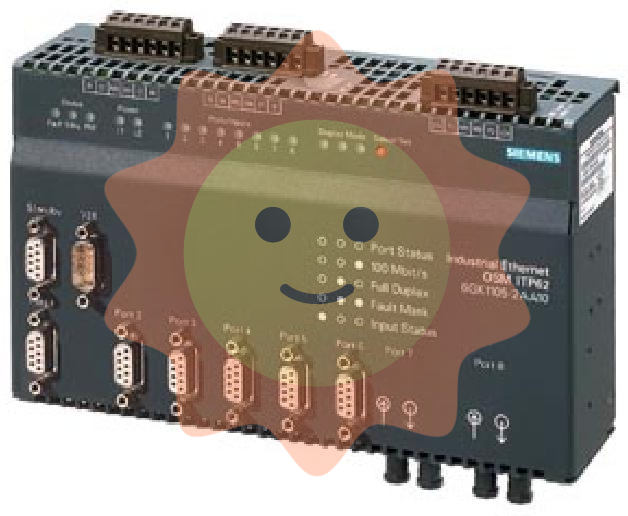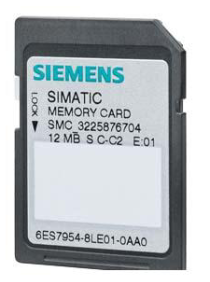In the ABB automation system, the MB810 module is a typical "signal bridge" equipment, whose core function is to solve compatibility issues between different types of equipment and different signal formats. In industrial sites, sensors, actuators, controllers, and other equipment often use different signal types (such as analog and digital) and communication protocols. The MB810 module achieves unified acquisition, standardized conversion, and reliable transmission of various signals through its built-in signal processing unit and protocol conversion module, ensuring that the upper control system (such as ABB AC500 series PLC) can accurately obtain on-site data and efficiently issue control instructions to the execution terminal..
ABB MB810 Module Mounting locations
Module core positioning
In the ABB automation system, the MB810 module is a typical "signal bridge" equipment, whose core function is to solve compatibility issues between different types of equipment and different signal formats. In industrial sites, sensors, actuators, controllers, and other equipment often use different signal types (such as analog and digital) and communication protocols. The MB810 module achieves unified acquisition, standardized conversion, and reliable transmission of various signals through its built-in signal processing unit and protocol conversion module, ensuring that the upper control system (such as ABB AC500 series PLC) can accurately obtain on-site data and efficiently issue control instructions to the execution terminal..
Core functional characteristics
1. Multi type signal processing capability
The MB810 module has rich signal processing functions and is compatible with bidirectional conversion of analog and digital signals. For analog signals, it supports the acquisition and output of commonly used industrial standards such as 4-20mA current signals and 0-10V voltage signals, with a conversion accuracy of up to 0.1%, which can meet the requirements of high-precision measurement and control scenarios; For digital signals, it can realize the input and output of dry contact and PNP/NPN switch signals, support the recognition of level signals and pulse signals, and adapt to the signal requirements of various industrial sensors and actuators.
2. Flexible communication adaptation capability
The module is equipped with multiple mainstream industrial communication protocols, including Modbus RTU, Profinet, EtherNet/IP, etc. It can switch communication modes through software configuration according to actual application scenarios, achieving seamless integration with ABB PLC, third-party controllers, human-machine interfaces (HMI), and industrial monitoring systems (SCADA). At the same time, it supports flexible configuration of communication parameters, such as baud rate, parity check, IP address, etc., to meet the needs of different network architectures.
3. High reliability and anti-interference design
In response to the complex electromagnetic environment of industrial sites, the MB810 module adopts multiple anti-interference technologies, including optoelectronic isolation, surge protection, electromagnetic shielding, etc., which can effectively resist interference factors such as voltage fluctuations, electromagnetic radiation, lightning strikes, etc., ensuring the stability of signal transmission. The working temperature range of the module is wide from -20 ℃ to 60 ℃, supporting long-term stable operation in harsh industrial environments, with an average time between failures (MTBF) of over 100000 hours.
4. Convenient diagnostic and maintenance functions
The module is equipped with comprehensive self diagnosis and status indication functions. The LED indicator lights on the panel can display the power status, communication status, signal acquisition/output status, and fault information in real time, making it easy for on-site personnel to quickly judge the operation status of the module. At the same time, it supports reading module fault logs through upper computer software, including detailed information such as signal abnormalities, communication interruptions, power failures, etc., providing accurate basis for fault diagnosis and maintenance.
5. Modularity and scalability
The MB810 module adopts a standardized guide rail installation design, which has good compatibility with ABB AC500 series PLC and other expansion modules. It can be stacked and expanded with multiple modules through a bus interface, and the number and type of modules can be flexibly configured according to actual measurement and control needs to build personalized automation control solutions. The module has a compact size and occupies a small installation space, making it suitable for the layout requirements of various industrial control cabinets.
Typical Applicable Scenarios
1. Industrial process control field
In process industries such as chemical, petroleum, and metallurgy, the MB810 module can be used to collect key process parameters such as temperature, pressure, flow rate, and liquid level (by connecting corresponding sensors), convert analog signals into standardized digital signals, and transmit them to PLC or SCADA systems. At the same time, it receives instructions from the control system and outputs analog or digital signals to control the actions of actuators such as valves and pumps, achieving precise control of the production process.
2. Intelligent manufacturing and production line automation
In the production lines of discrete manufacturing industries such as automobile manufacturing and electronic processing, the MB810 module can serve as the core interface for device interconnection, connecting various detection sensors (such as photoelectric sensors, proximity switches), actuators (such as cylinders, servo motor drivers), and production equipment (such as machine tools, robots), achieving signal interaction and collaborative control between devices, and improving the automation level and production efficiency of the production line.
3. Energy monitoring and management system
In the fields of electricity, photovoltaics, wind power and other energy sources, the MB810 module can be used to collect operating parameters (such as current, voltage, power) of generators, transformers, inverters and other equipment, and upload the data to the energy management platform through communication interfaces to achieve real-time monitoring and data analysis of energy production, transmission and consumption processes, providing data support for energy optimization and scheduling.
4. Intelligent buildings and infrastructure
In infrastructure scenarios such as smart buildings and rail transit, the MB810 module can be used to connect control units of air conditioning, water supply and drainage, lighting and other equipment, collect equipment operation status signals, and issue control instructions to achieve automatic start stop and parameter adjustment of equipment, improving the intelligent management level and energy utilization efficiency of infrastructure.
Key points for installation and debugging
1. Installation specifications
Before installation, it is necessary to confirm that the power supply voltage of the module matches the on-site power supply to avoid module damage caused by overvoltage or undervoltage; The module should be installed in a well ventilated location away from heat sources and strong electromagnetic interference sources to ensure that the working environment meets the technical parameter requirements; When installing with a 35mm DIN rail, it is necessary to ensure that the module is firmly fixed to avoid vibration affecting signal transmission; When wiring, it is necessary to strictly follow the terminal definition for connection, distinguish between analog and digital channels, and avoid module faults caused by incorrect connections.
2. Debugging process
1. Power debugging: Connect the module power supply, observe whether the power indicator light is on normally, and confirm that the module power supply is stable.
2. Communication configuration: Connect the module through ABB dedicated debugging software (such as Control Builder Plus), configure communication protocol, communication address, IP address and other parameters to ensure normal communication between the module and the upper computer or controller.
3. Signal calibration: Calibrate the analog input channel, input known signals through a standard signal source, and check the accuracy of the data collected by the module; For the analog output channel, send instructions through the upper computer to measure whether the output signal meets the requirements.
4. Functional testing: Simulate on-site working conditions to test the response of digital input channels to switch signals, as well as the control effect of digital output channels on actuators; Conduct continuous operation testing to observe the stability of the module and the reliability of data transmission.
3. Daily maintenance
Regularly check whether the power connection and wiring terminals of the module are loose to avoid poor contact and faults; Regularly clean the module panel to ensure that the indicator lights are clear and visible; Regularly read module fault logs through upper computer software to promptly identify and address potential issues; In scenarios with significant temperature fluctuations, it is important to pay attention to the operating temperature of the module to avoid overheating.

- User name Member Level Quantity Specification Purchase Date
- Satisfaction :
-









Email:wang@kongjiangauto.com




































































































































